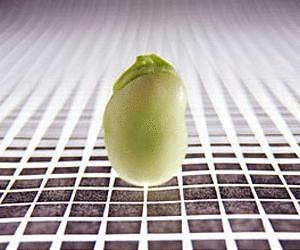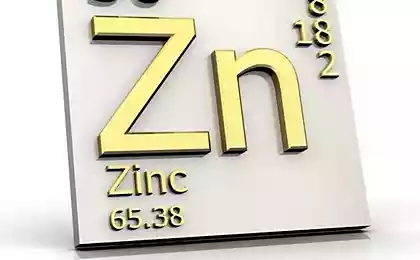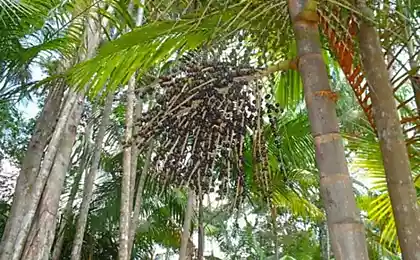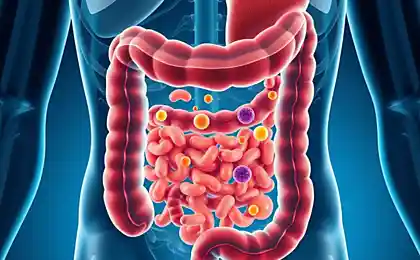422
As crops absorb nanoparticles
For the first time, scientists tracked the uptake of agricultural crops of the nanoparticles from the soil and analyzed the chemical States of their metallic elements. It turned out that the zinc dissolves and accumulates throughout the plant, while cerium in the tissues of plants is not soluble. These results contribute to the controversial debate about the toxicity of nanoparticles for plants and the probability of artificial nanoparticles in the food chain. The study was published February 6 in the journal ACS Nano.
An international research team led by Jorge Gardea-Torresdey from the University of Texas at El Paso. It included scientists from the University of California, Santa Barbara, National accelerator laboratory SLAC in Standarde (CA) and install the European synchrotron radiation (ESRF) in Grenoble (France).
"The market there is an increasing number of products containing artificial nanoparticles, which eventually will be in the water, soil and air. That is why it is very important to study the interaction between crops and nanoparticles, as the last possible translocation into the food chain starts here," says Jorge Gardea-Torresdey, Professor and Dean of the faculty himym University of Texas at El Paso.

Scientists have focused on soybeans, the fifth largest crop in global agricultural production and second in the United States. The soil in which grew the plants, mixed with zinc oxide (ZnO) and cerium dioxide (CeO2, nanoceria) — nanoparticles, which are one of the most commonly used in the industry. ZnO is widely used in sunscreen products, in gas sensors, antibacterial agents, optical and electronic devices, and also as a dye.
Nanoceria — a great catalyst for internal combustion and kreirana oil. It is also used in gas sensors, sunscreen products and cosmetic creams. When soybeans in greenhouses ripe, scientists began to study the distribution of zinc and cerium in the plant. The use of microscopic x-rays in the synchrotron on the basis of the ESRF and at the Stanford synchrotron radiation (SSRL) allowed the researchers to determine the chemical form of these metals, for example, whether they were still associated with the nanoparticles or had dissolved and formed a connection with the plant tissues.
It turned out that cerium is present not only in nodules of plants close to the soil, but also in pods. Detailed spectral analysis of signals radiographs showed that the cerium in the nodules and pods in the same chemical state as in the nanoparticles. However, part of the cerium had changed its oxidation state from Ce(IV) to Ce(III), which may alter the chemical activity of nanoparticles.

Zinc was detected in nodules, stems and pods at higher concentrations than in the control group. Spectral analysis showed the presence in plants of zinc that is associated with the ZnO nanoparticle, which means the biotransformation of zinc nanoparticles. The spectrum suggests that organic acids such as citrate, are the probable ligands for the zinc.
"As zinc is present in most plants, it is no surprise that zinc from the nanoparticles in the soil is able to penetrate the plant tissue. But plants are able to assimilate more dangerous elements like cadmium or arsenic, which, being used in nanoparticles, might pose a real threat," says Hiram Castillo.
"Our results also showed that, if nanoceria CeO2 is present in the soil, it can be absorbed by food crops. The cerium has no chemical partner in the plant tissues, and it is not biotransformiroetsa in soybeans, but it still reaches the food chain and the next generation of soybeans," adds Jorge Gardea-Torresdey.
"It should be remembered that as soon as artificial nanoparticles enter the food chain, the process becomes cumulative. Acceptable levels today can become dangerous tomorrow. It is therefore important to study not only the possibility of absorption of synthetic nanoparticles from the soil, but also how they biotransformiroetsa in plants," concludes the scientist.
Source: /users/104
An international research team led by Jorge Gardea-Torresdey from the University of Texas at El Paso. It included scientists from the University of California, Santa Barbara, National accelerator laboratory SLAC in Standarde (CA) and install the European synchrotron radiation (ESRF) in Grenoble (France).
"The market there is an increasing number of products containing artificial nanoparticles, which eventually will be in the water, soil and air. That is why it is very important to study the interaction between crops and nanoparticles, as the last possible translocation into the food chain starts here," says Jorge Gardea-Torresdey, Professor and Dean of the faculty himym University of Texas at El Paso.

Scientists have focused on soybeans, the fifth largest crop in global agricultural production and second in the United States. The soil in which grew the plants, mixed with zinc oxide (ZnO) and cerium dioxide (CeO2, nanoceria) — nanoparticles, which are one of the most commonly used in the industry. ZnO is widely used in sunscreen products, in gas sensors, antibacterial agents, optical and electronic devices, and also as a dye.
Nanoceria — a great catalyst for internal combustion and kreirana oil. It is also used in gas sensors, sunscreen products and cosmetic creams. When soybeans in greenhouses ripe, scientists began to study the distribution of zinc and cerium in the plant. The use of microscopic x-rays in the synchrotron on the basis of the ESRF and at the Stanford synchrotron radiation (SSRL) allowed the researchers to determine the chemical form of these metals, for example, whether they were still associated with the nanoparticles or had dissolved and formed a connection with the plant tissues.
It turned out that cerium is present not only in nodules of plants close to the soil, but also in pods. Detailed spectral analysis of signals radiographs showed that the cerium in the nodules and pods in the same chemical state as in the nanoparticles. However, part of the cerium had changed its oxidation state from Ce(IV) to Ce(III), which may alter the chemical activity of nanoparticles.

Zinc was detected in nodules, stems and pods at higher concentrations than in the control group. Spectral analysis showed the presence in plants of zinc that is associated with the ZnO nanoparticle, which means the biotransformation of zinc nanoparticles. The spectrum suggests that organic acids such as citrate, are the probable ligands for the zinc.
"As zinc is present in most plants, it is no surprise that zinc from the nanoparticles in the soil is able to penetrate the plant tissue. But plants are able to assimilate more dangerous elements like cadmium or arsenic, which, being used in nanoparticles, might pose a real threat," says Hiram Castillo.
"Our results also showed that, if nanoceria CeO2 is present in the soil, it can be absorbed by food crops. The cerium has no chemical partner in the plant tissues, and it is not biotransformiroetsa in soybeans, but it still reaches the food chain and the next generation of soybeans," adds Jorge Gardea-Torresdey.
"It should be remembered that as soon as artificial nanoparticles enter the food chain, the process becomes cumulative. Acceptable levels today can become dangerous tomorrow. It is therefore important to study not only the possibility of absorption of synthetic nanoparticles from the soil, but also how they biotransformiroetsa in plants," concludes the scientist.
Source: /users/104
Japanese restaurant about zauo isn - catch the next dinner itself
The world's lightest solid material






















